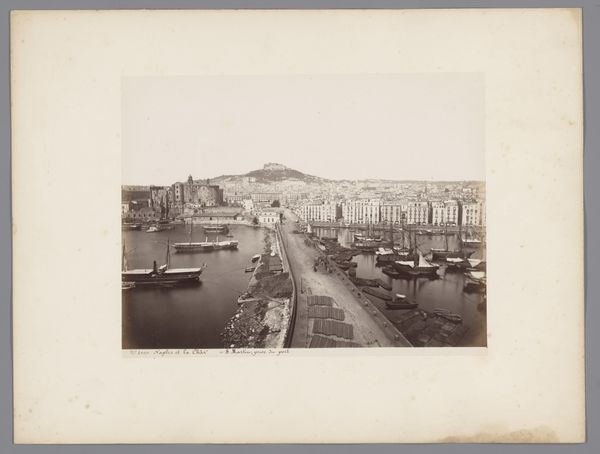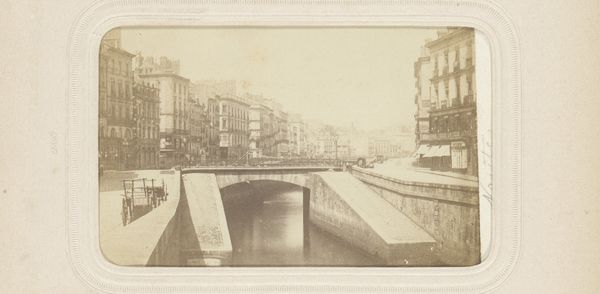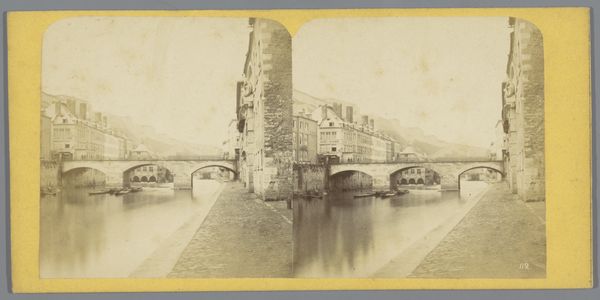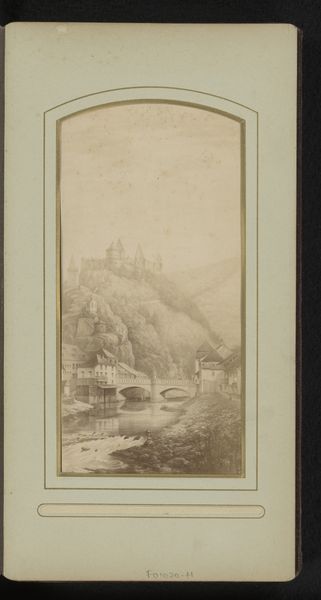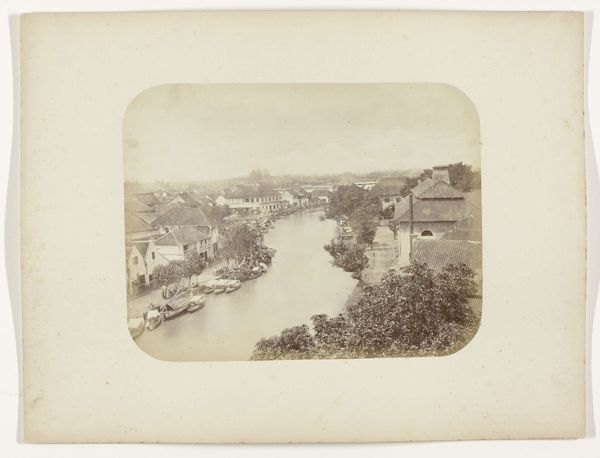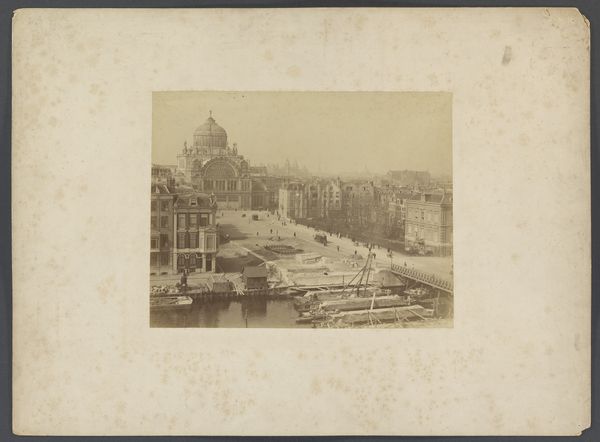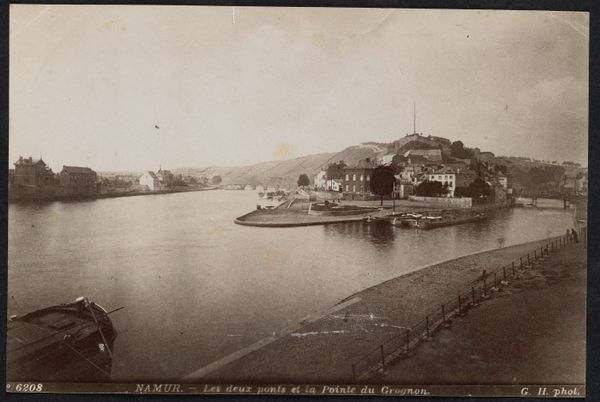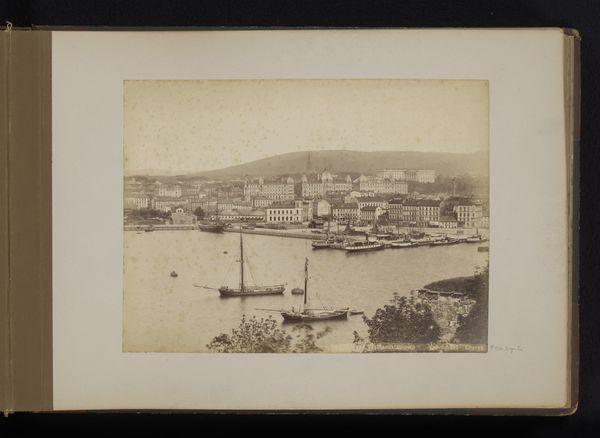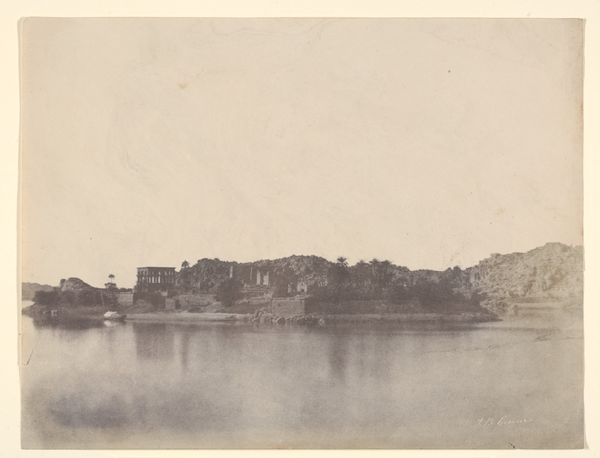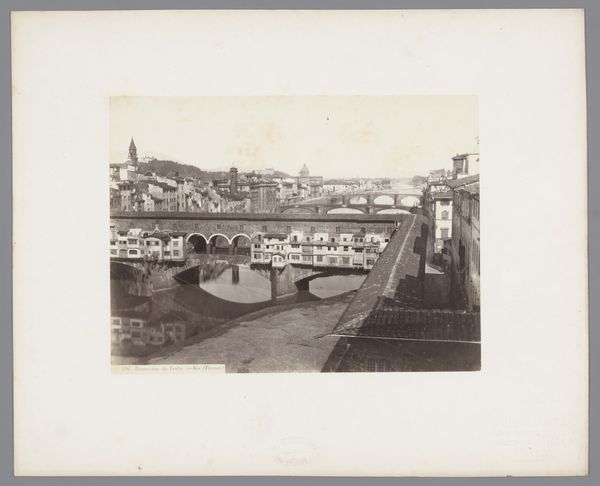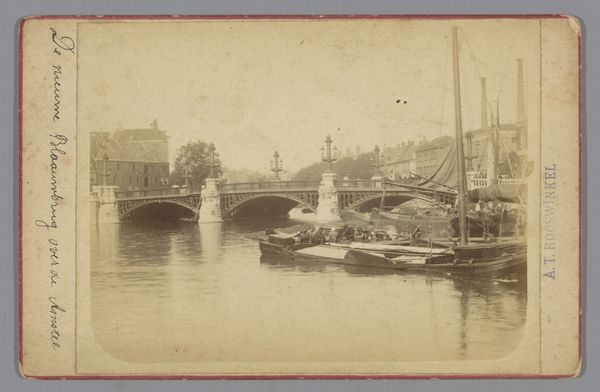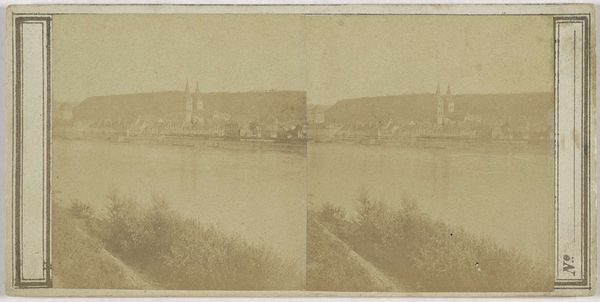
photography, albumen-print
#
16_19th-century
#
photography
#
cityscape
#
albumen-print
#
realism
Dimensions: height 63 mm, width 105 mm
Copyright: Rijks Museum: Open Domain
Curator: Alfred Beau captured this cityscape, likely of Morlaix in France, sometime between 1854 and 1860 using the albumen print process. It's a fantastic example of early photography embracing realism. Editor: My immediate reaction is one of tranquility. The tones are muted, almost monochromatic, lending a sense of stillness to the bustling port scene. There is also a beautiful repetition of rectangular forms created by the windows, buildings, and bridge; these structures draw my eye into the depths of the photograph, alluding to hidden spatial relationships. Curator: Considering the historical context, it's interesting to think about how the development of photography impacted perceptions of urban space during the mid-19th century. Urban development at the time changed life in France with so much migration and industrial revolution, which influenced art production. These works serve as valuable historical records that freeze these times in human history. Editor: Precisely. By focusing on tonal variations and the play of light across surfaces, the composition constructs its own visual syntax. Notice how the contrast emphasizes the architectural details and ship masts, thereby delineating an asymmetrical urban structure. This emphasis lends importance to the details of ordinary architecture during the Second Empire, and gives viewers insight into the city during its development. Curator: The image is imbued with nostalgia, particularly because this type of albumen print created unique color textures with age that we will no longer have when they disintegrate; its fragility speaks to themes of urban renewal, progress, and the way lives are so different in the modern world versus what it might have been like living in 19th century France. How fascinating. Editor: Absolutely, the muted sepia tones and soft focus add to the photo's inherent semiotic codes; therefore, it emphasizes the image's materiality and calls on our visual sensitivities. I have a greater awareness and visual relationship to this particular street view because of it. Curator: I appreciate how examining art through varying lenses – in my case, looking at the image through social progress during a pivotal time in history, whereas in yours, decoding this work through careful visual and sensorial examination - enhances the viewer's connection. Thank you. Editor: Agreed. Considering both visual relationships as well as the image's semiotic depth contributes to greater awareness and interpretation.
Comments
No comments
Be the first to comment and join the conversation on the ultimate creative platform.
